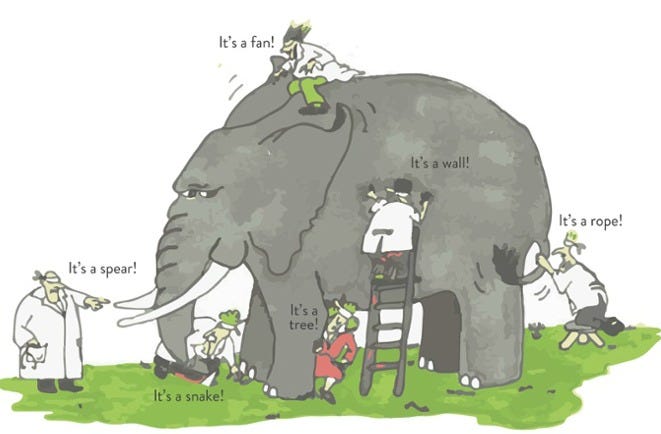Parable of the Elephant
A group of blind men heard that a strange animal, called an elephant, had been brought to the town, but none of them were aware of its shape and form. Out of curiosity, they said: "We must inspect and know it by touch, of which we are capable". So, they sought it out, and when they found it they groped about it. The first person, whose hand landed on the trunk, said, "This being is like a thick snake". For another one whose hand reached its ear, it seemed like a kind of fan. As for another person, whose hand was upon its leg, said, the elephant is a pillar like a tree-trunk. The blind man who placed his hand upon its side said the elephant, "is a wall". Another who felt its tail, described it as a rope. The last felt its tusk, stating the elephant is that which is hard, smooth and like a spear.
following from here
I just love the ancient parable about the elephant. Six blind men were asked to describe an elephant by touching its body parts. The first man felt its side and described the elephant as a wall, the second man touched its tusk and thought it was a spear, the third man felt its trunk and was confident it was a snake, the fourth touched the knee and believed it was a tree, the fifth felt the ear and thought it was a fan and, finally, the sixth held the tail and assumed the elephant was a rope. None of the blind men was wrong in his analysis because each was perfectly describing the body part he touched and felt.
The problem came from their limited perception — they believed that they understood the situation, which led each of them to a mistaken conclusion. They missed the big picture — they were petting an elephant! The same applies to making data-driven decisions. When we have limited data and information, we don’t get the whole picture. And, the same is true in reverse — often when you get the big picture, you miss out on all the parts that go into its creation.

No comments:
Post a Comment